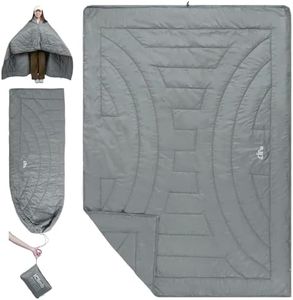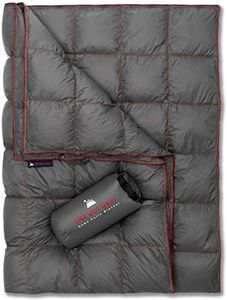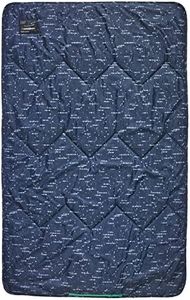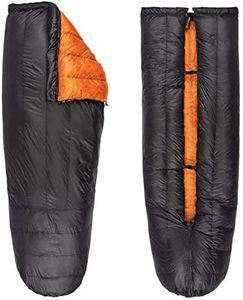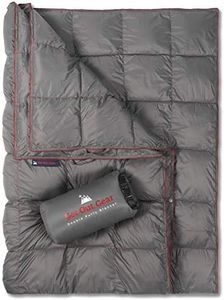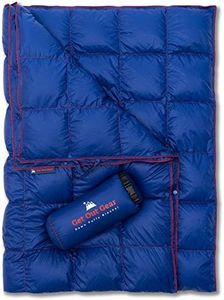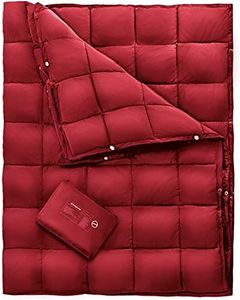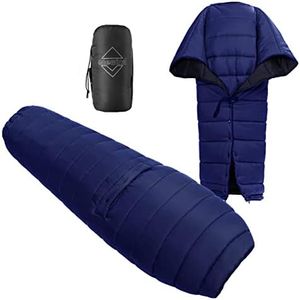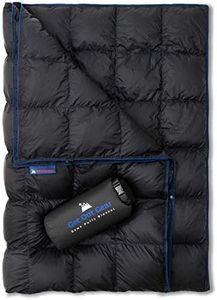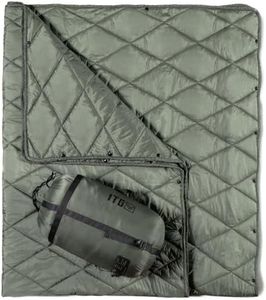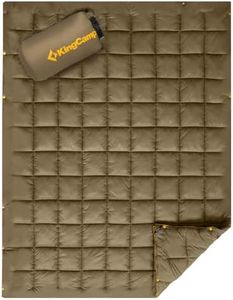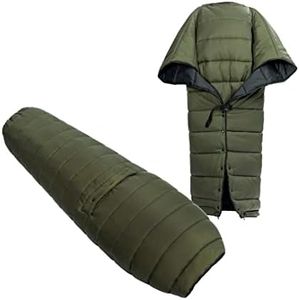We Use CookiesWe use cookies to enhance the security, performance,
functionality and for analytical and promotional activities. By continuing to browse this site you
are agreeing to our privacy policy
10 Best Budget Backpacking Quilt
From leading brands and best sellers available on the web.Buying Guide for the Best Budget Backpacking Quilt
When choosing a backpacking quilt, it's important to focus on how it will keep you warm, comfortable, and light on your feet during your trips. A backpacking quilt is a lightweight sleeping alternative designed for hikers who want to reduce pack weight while staying cozy. Your aim should be to balance weight, warmth, durability, and comfort for the types of trips you plan to take—whether you're heading out for summer hikes or more challenging three-season treks.Temperature RatingThe temperature rating tells you the lowest temperature at which the quilt should keep you comfortable. This is crucial because it determines in what kind of weather you can safely use the quilt. Ratings are usually given in degrees Fahrenheit or Celsius, and you will often see quilts marked for summer, 3-season, or winter use. If you are a warm sleeper or only plan to camp in warmer weather, a quilt rated for higher temperatures (40°F/5°C or above) should suffice. For spring and fall or if you get cold easily, look for a 3-season quilt (20–30°F/-6–0°C). Choose your quilt’s temperature rating based on the coldest conditions you expect during your adventures.
WeightWeight refers to how heavy the quilt is, and it's a very important factor for backpackers who aim to keep their packs light. Quilts can be very lightweight, making them attractive to those hiking long distances. Generally, lighter quilts (under 1.5 pounds/700 grams) are best for ultralight hikers, while slightly heavier ones can offer a bit more comfort and warmth. Consider how far you plan to hike and how much every ounce means to you—if in doubt, strike a balance between comfort and weight.
Insulation TypeInsulation is what provides warmth in your quilt, and there are mainly two types: down and synthetic. Down insulation is lighter and more compressible (packs smaller), but it can lose warmth if it gets wet. Synthetic insulation is bulkier but keeps insulating even when damp and usually costs less. For dry climates or those wanting every bit of weight savings, down is ideal. If you expect wet conditions or want easier care, synthetic is the safer choice.
Length and WidthThe size of your quilt matters to ensure you get full coverage. Length is typically offered in regular and long, and width options differ depending on how much room you like. A quilt that’s too short may leave your feet exposed, while a too-narrow one could make you feel cramped. Think about your height, build, and how much you move around at night. If you're tall or wide-shouldered, consider a longer or wider size for maximum comfort.
Footbox DesignThe footbox is the section at the bottom of the quilt where your feet go. Some quilts have sewn-closed footboxes, while others are drawstring or zippered. Sewn-closed footboxes are warmer but less versatile, while drawstring or zippered footboxes let you open them for ventilation in warmer weather. Choose a footbox style based on whether you prioritize warmth (closed) or flexibility for different temperatures (adjustable).
Attachment SystemQuilts typically come with systems to attach them to your sleeping pad, preventing drafts and keeping you covered through the night. These systems range from simple straps to more elaborate clips or toggles. A good attachment system keeps the quilt in place but should be easy to use. If you toss and turn, look for quilts with reliable attachment options to stay warm all night.
Fabric MaterialsBackpacking quilts are covered with different fabrics, usually lightweight nylon or polyester. The denier, a measure of fabric thickness, can help you gauge durability: higher numbers mean stronger, more resistant fabric but can add weight. If you’re rough on gear or camp in rugged areas, go for a tougher fabric. If you’re careful with your gear and want to save a few ounces, lighter fabric is fine.

